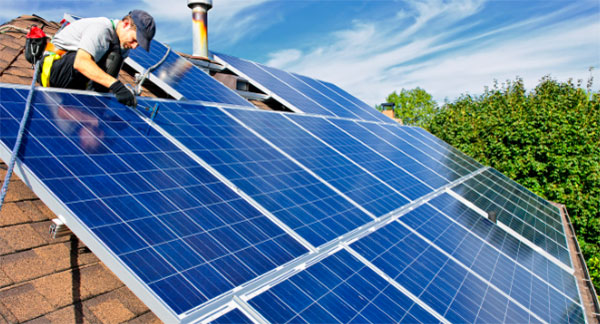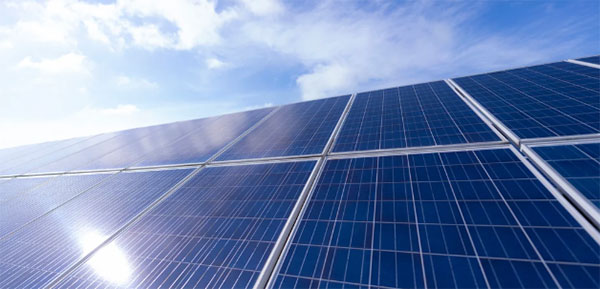Description
Having more solar panels typically increases energy production, reducing reliance on non-renewable energy sources and saving costs over time.
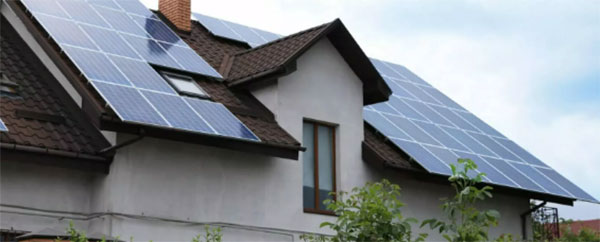
Solar Panels: Understanding Efficiency and Power Generation
Solar panels convert sunlight into electricity, leveraging the photovoltaic effect to produce power. The efficiency and power output of a solar panel system depend on several key factors, including panel quality, installation parameters, and environmental conditions.
How Solar Panels Work
Solar panels consist of photovoltaic (PV) cells that absorb sunlight and convert it into electricity. When sunlight hits a PV cell, it causes electrons to become excited and move, creating an electric current. This process transforms solar energy into usable electrical power.
Key Point: The efficiency of solar panels typically ranges from
15% to 22%, depending on the technology and materials used. High-efficiency panels produce more electricity per square foot, making them ideal for areas with limited space.
Factors Influencing Solar Panel Efficiency
Several factors impact the efficiency and performance of solar panels:
- Material Quality: High-quality silicon cells tend to have higher efficiency rates.
- Panel Size and Specifications: Larger panels with more cells can generate more power, with sizes varying widely from 60-cell residential panels to 72-cell commercial panels.
- Environmental Conditions: Optimal conditions include sunny, cool environments. High temperatures can reduce panel efficiency by 0.25% to 0.5% per degree Celsius above 25 C.
- Installation Angle and Orientation: The best angle and orientation depend on your location but aiming panels true south and tilting them at an angle equal to your latitude offers a good starting point.
Important: Ensuring your solar panel system is designed to maximize exposure to sunlight while minimizing losses due to shading or suboptimal angles is crucial for efficiency.
The Role of Solar Panel Quantity in Energy Production
The number of panels installed directly influences the total power output of a solar energy system. More panels mean more power, but the decision on quantity should consider several aspects:
- Energy Needs: A typical household uses about 10,400 kWh annually. With average efficiencies and sunlight, a single solar panel produces roughly 350 to 850 kWh per year, indicating a need for multiple panels to meet total energy demands.
- Budget and Space: Installation costs and available space may limit the number of panels. The average cost of solar panels ranges from $0.70 to $1.50 per watt, making the total investment significant.
- Long-term Value: Solar panels have a lifespan of 25 to 30 years, with a gradual decrease in efficiency over time. High-quality panels can retain over 80% of their efficiency even at the end of their lifespan.
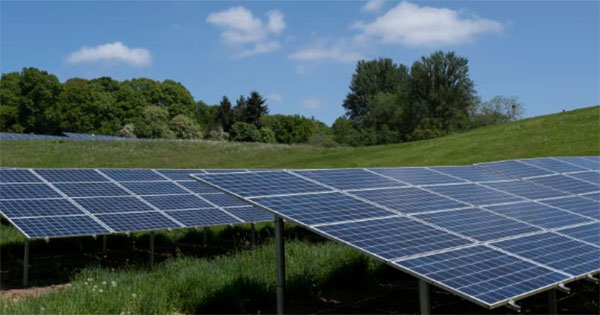
Optimizing Solar Panel Installation for Maximum Efficiency
The optimization of solar panel installation is crucial for maximizing energy production, efficiency, and the overall return on investment. This involves a thorough analysis of energy needs, spatial considerations, and the impact of panel orientation and tilt.
Calculating Your Energy Needs
The first step in optimizing your solar panel installation is to accurately calculate your energy consumption. This involves reviewing your electricity bills to determine your monthly and annual energy usage, typically measured in kilowatt-hours (kWh). The average American household consumes about
10,649 kWh per year. Understanding your energy needs helps in designing a solar system that can meet these demands effectively.
Key Insight: Tailoring the solar panel system to your specific energy requirements can significantly enhance efficiency, ensuring that the system is neither underutilized nor overextended.
Space Considerations for Solar Panel Arrays
Space is a critical factor in the planning and installation of solar panels. The area available on your roof or land dictates the number of panels you can install and, consequently, the potential electricity the system can generate. Solar panels vary in size, but a standard residential panel is approximately
1.6 meters by 1 meter, requiring about
17.6 square feet of space. For a system designed to produce about
5 kW, which is average for a residential home, approximately
20 to 25 panels are necessary, covering around
352 to 440 square feet of space.
Important Consideration: Optimal utilization of available space without compromising the system's efficiency is key to maximizing solar energy production.
The Impact of Panel Orientation and Tilt on Efficiency
Panel orientation and tilt are vital for maximizing the efficiency of solar panels. The optimal orientation is true south in the Northern Hemisphere and true north in the Southern Hemisphere. The tilt angle should ideally match the latitude of the installation location to maximize the amount of sunlight captured throughout the year.
- Orientation: Incorrect orientation can reduce the energy production of solar panels by up to 35%.
- Tilt Angle: Adjusting the tilt angle can increase annual energy output by 5% to 10% in most regions.
Critical Strategy: Adjusting the orientation and tilt of solar panels according to geographic and climatic conditions optimizes sunlight absorption, significantly enhancing energy production.

Exploring the Economic Impacts of Solar Panel Installation
The decision to install solar panels is not only an environmental consideration but also a significant economic commitment. Understanding the cost-benefit analysis of adding more panels, available incentives, and the balance between long-term savings and initial outlays is crucial for making an informed decision.
Cost-Benefit Analysis of Additional Panels
Adding more solar panels to your system increases the upfront cost but can significantly enhance your energy independence and reduce your electric bill. The average cost of solar panels ranges from
$0.70 to $1.50 per watt, with a standard 5kW system costing between
$3,500 and $7,500 before incentives. Each additional kilowatt of power can increase the cost by
$1,400 to $3,000 but also raises the potential for energy production by
1,200 to 1,600 kWh per year, depending on your location and the efficiency of the panels.
Key Insight: A detailed cost-benefit analysis, considering your energy needs and the potential for excess energy production (which can often be sold back to the grid), is essential. The breakeven point typically occurs within
7 to 8 years, with substantial savings thereafter.
Incentives and Rebates for Solar Energy Systems
Government incentives and rebates play a pivotal role in offsetting the initial cost of solar panel installation. The Federal Solar Investment Tax Credit (ITC) offers a
26% tax credit for systems installed by 2022, which decreases to
22% in 2023 and is scheduled to expire by 2024 unless renewed. Many states and local governments offer additional rebates and tax incentives, which can reduce the upfront cost by an additional
10% to 20%.
Important Consideration: Maximizing the use of available incentives and rebates can significantly reduce the initial investment and improve the return on investment for solar panel systems.
Long-Term Savings vs. Initial Investment
The long-term financial benefits of solar panels are substantial, with savings on electricity bills averaging
$1,200 to $2,000 per year. Considering the average lifespan of solar panels is
25 to 30 years, the total savings can be significant. However, the initial investment is considerable, with average costs (before incentives) for a residential solar system ranging from
$15,000 to $25,000.
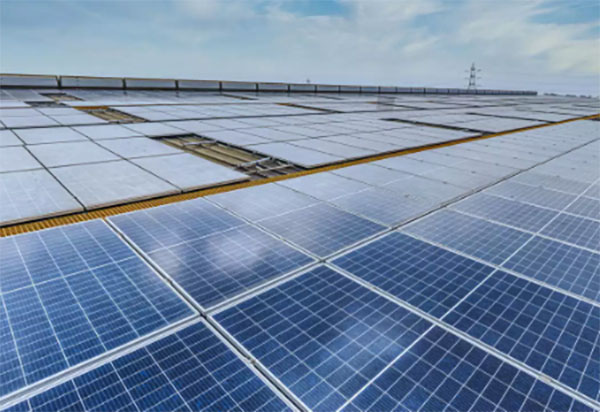
Delving into the Environmental Benefits of Solar Energy
The shift towards solar energy is a pivotal step in reducing global carbon emissions and promoting sustainability. By understanding the environmental implications of solar energy, including its ability to diminish our carbon footprint and the sustainability of large-scale installations, we can better appreciate its role in combating climate change.
Reducing Carbon Footprint Through Solar Energy
Solar energy presents a clean, renewable power source that significantly reduces greenhouse gas emissions. Here are some key points illustrating its impact:
- Immediate Reduction in Carbon Emissions: Transitioning to solar energy from fossil fuels can reduce a household's carbon footprint by up to 80% annually. For instance, a standard residential solar panel system can save approximately 3 to 4 tons of carbon emissions per year, equivalent to planting over 100 trees annually.
- Life Cycle Analysis Benefits: Studies show that solar panels have a relatively low life-cycle greenhouse gas (GHG) emissions of 20 to 50 grams of CO2 equivalent per kilowatt-hour (gCO2eq/kWh), significantly lower than coal or natural gas power plants.
Key Insight: The adoption of solar energy plays a crucial role in reducing the reliance on fossil fuels, thereby lowering the overall carbon emissions associated with electricity generation.
The Sustainability of Large-Scale Solar Installations
Large-scale solar installations are essential for meeting the renewable energy demands of the global population. However, their sustainability is often questioned. Here are detailed considerations:
- Land Use and Ecosystem Impact: Large solar farms require significant land, which can lead to habitat disruption. However, careful site selection and dual-use practices, such as agrivoltaics (combining agriculture with solar panels), can mitigate these impacts.
- Material Use and Recycling: Solar panels are made from silicon, metals, and other materials that require energy to manufacture. The solar industry is advancing recycling methods to recover materials from panels at the end of their life cycle, typically 25 to 30 years.
- Water Usage: Water is used in the manufacturing process of solar panels and, to a lesser extent, in their maintenance. Compared to conventional power production, solar energy uses significantly less water, contributing to its sustainability.
Highlighting Solar Energy Successes: From Homes to Industries and Communities
The shift towards solar energy is evidenced by numerous success stories across residential, commercial, and community projects. These examples not only showcase the versatility and efficiency of solar power but also highlight the significant economic and environmental benefits.
Residential Solar Panel Success Stories
Residential solar installations have transformed energy consumption for homeowners, offering substantial savings and energy independence. Consider the case of a homeowner in California who installed a 7kW solar panel system. This system generates approximately
10,000 kWh annually, covering their entire electricity demand and saving them around
$2,200 per year on utility bills. The upfront cost of the system was
$21,000, but with federal and state incentives, the net cost dropped to
$14,700. The system will pay for itself in under 7 years, with
solar panels having a lifespan of 25 to 30 years.
Key Insight: Residential solar systems provide significant long-term savings, greatly reducing or even eliminating electricity bills.
Commercial and Industrial Solar Solutions
Commercial and industrial solar projects highlight the scalability of solar energy to meet larger energy demands. A notable example is a manufacturing facility in New Jersey that installed a 1MW solar array on its rooftop. This installation produces over
1.2 million kWh annually, offsetting a substantial portion of the facility's energy needs and reducing its carbon footprint by approximately
850 metric tons of CO2 annually. The project had an initial investment of
$2.5 million, with expected savings in energy costs amounting to
$120,000 annually, achieving break-even in just over 20 years, considering incentives and the decreasing cost of solar energy.
Important Consideration: Commercial solar solutions significantly reduce operating costs and demonstrate a company's commitment to sustainability.
Community Solar Projects: Balancing Quantity and Efficiency
Community solar projects allow individuals who may not have suitable roofs for solar panels to benefit from solar energy. One successful community solar project in Colorado consists of a 5MW solar garden that serves over 300 households. Participants can subscribe to a portion of the solar garden and receive credits on their electricity bills, saving an average of
10% to 15% annually on electricity costs. The project cost was
$13 million, with the price per subscriber being offset by federal tax credits and reduced collective costs, showcasing a model for accessible renewable energy.
Critical Strategy: Community solar projects exemplify how collective investment in solar energy can provide cost-effective access to renewable energy, fostering broader community participation and benefits.





